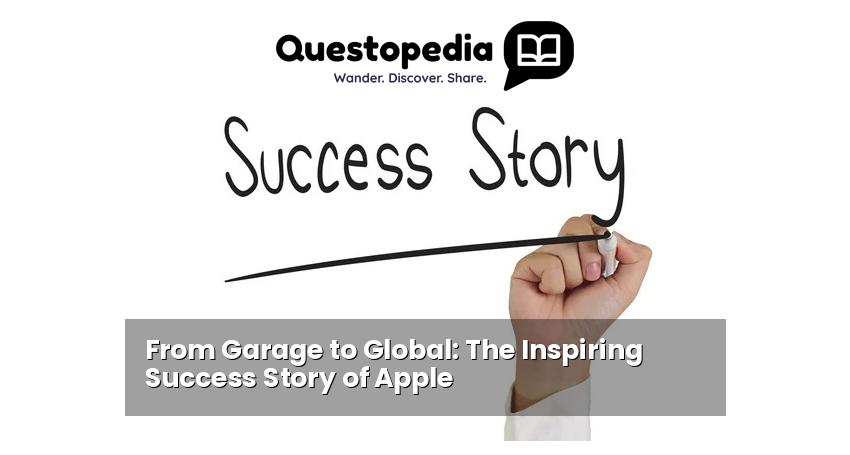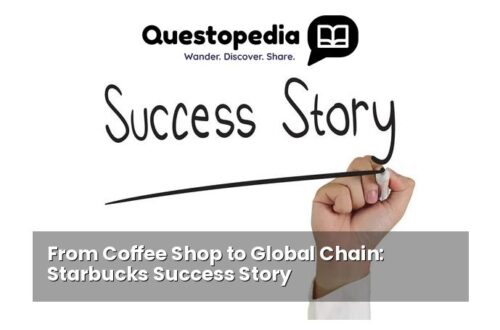From Garage to Global: The Inspiring Success Story of Apple
Apple. The name conjures images of sleek iPhones, powerful MacBooks, and a global brand recognized and admired worldwide. But how did this tech giant rise from humble beginnings in a Silicon Valley garage to become one of the most valuable companies on the planet? This is the inspiring success story of Apple, a journey marked by innovation, perseverance, and a relentless pursuit of excellence.
The Early Days: A Garage and a Dream
Our story begins in 1976 in the garage of Steve Jobs’ parents’ home in Los Altos, California. Here, alongside Steve Wozniak and Ronald Wayne, the seeds of Apple Computer Company were sown. Wozniak, a brilliant engineer, had designed the Apple I, a single-board computer. Recognizing its potential, Jobs, a charismatic and driven entrepreneur, saw an opportunity to bring this technology to the masses.
The Apple I and the Apple II: The First Steps
The Apple I, though basic, was a significant step forward. It was sold as a kit, appealing to hobbyists and early adopters. However, it was the Apple II, launched in 1977, that truly put Apple on the map. The Apple II was a complete, ready-to-use computer with color graphics, a user-friendly interface, and the game-changing VisiCalc spreadsheet program. This made it incredibly appealing to businesses and home users alike, propelling Apple into the forefront of the personal computer revolution. The Apple II success story is a testament to simplicity and user-friendliness in a burgeoning tech market.
The Macintosh Revolution: Thinking Different
The 1980s brought both challenges and triumphs. Apple faced increasing competition from IBM and other PC manufacturers. However, under Steve Jobs’ visionary leadership, Apple developed the Macintosh, a revolutionary computer featuring a graphical user interface (GUI) and a mouse.
“1984” and the Power of Marketing
The Macintosh launch was accompanied by the iconic “1984” Super Bowl commercial, a powerful and visually stunning advertisement that captured the essence of Apple’s rebellious spirit. This groundbreaking marketing campaign cemented Apple’s image as a company that dared to “Think Different” and challenge the status quo. Thinking Different became Apple’s mantra, a promise of innovation and a rejection of conformity.
The Internal Struggles and Jobs’ Departure
Despite the Macintosh’s innovative design, it faced initial challenges due to its higher price and limited software availability. Internal power struggles led to Steve Jobs’ departure from Apple in 1985. Without Jobs, Apple continued to innovate, but struggled to maintain its competitive edge in a rapidly evolving market.
The Return of the Prodigal Son: A Second Act
By the mid-1990s, Apple was in serious trouble. Years of mismanagement and lack of innovation had brought the company to the brink of bankruptcy. In a desperate attempt to save the company, Apple acquired NeXT, Steve Jobs’ company, in 1996. This brought Jobs back into the fold, and he was appointed interim CEO in 1997.
Rebuilding Apple: Focus and Innovation
Jobs immediately set about restructuring Apple, simplifying product lines, and focusing on innovation. He brought in Jonathan Ive, a talented designer, to lead the industrial design team. Together, they created a series of groundbreaking products that revitalized the company.
The iMac, iPod, and iPhone: A Trifecta of Success
The iMac, a colorful, all-in-one computer, was the first product to showcase Apple’s new design philosophy. It was a massive hit, signaling Apple’s return to prominence. Next came the iPod, a revolutionary portable music player that transformed the music industry. Finally, the iPhone, launched in 2007, redefined the smartphone and catapulted Apple to unprecedented heights. These three products represent a trifecta of success, each disrupting its respective market and solidifying Apple’s position as a global leader in technology and design.
The Legacy Continues: Apple Today
Today, Apple is one of the most valuable companies in the world. It continues to innovate and push the boundaries of technology with products like the iPad, Apple Watch, and AirPods. While Steve Jobs passed away in 2011, his vision and principles continue to guide the company under the leadership of Tim Cook.
Challenges and the Future
Apple faces ongoing challenges, including increasing competition, privacy concerns, and the need to maintain its innovative edge. However, with its strong brand, loyal customer base, and a commitment to excellence, Apple is well-positioned to continue its success story for years to come. The future of Apple depends on its ability to adapt to a changing world and continue to deliver innovative and inspiring products.
Conclusion
From its humble beginnings in a garage to its current status as a global icon, Apple’s story is a testament to the power of innovation, perseverance, and a relentless pursuit of excellence. It’s a story of risk-taking, setbacks, and ultimately, triumph. The inspiring success story of Apple is a reminder that even the most ambitious dreams can be realized with vision, hard work, and a willingness to “Think Different.”






